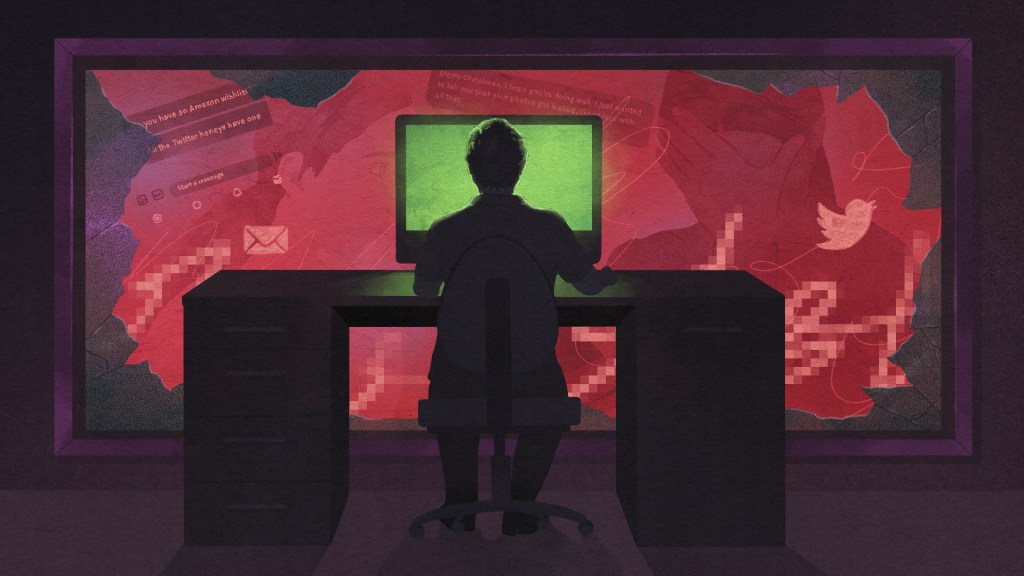A couple of years ago, a journalist that used SecureDrop, the WikiLeaks-style submission system that allows sources to submit documents anonymously to newsrooms, couldn’t decrypt a file. The journalist asked Harlo Holmes for help.
Holmes, who works for the organization that develops and maintains SecureDrop, jumped on the first Acela train from New York City to Washington D.C. When she got there, she realized the journalist couldn’t decrypt the file because the file didn’t finish downloading. Whoops.
Videos by VICE
While some might be tempted to make fun of this mistake, Holmes learned a valuable lesson: not all journalists are technically savvy, and it’s her job to teach them how to understand technology, and how to learn to use the sometimes complicated tools that can keep their data (and their sources’ data) safe.
Read more: This Ex-NSA Hacker Is Building an AI to Find Hate Symbols on Twitter
Holmes is the director of newsroom digital security for the Freedom of the Press Foundation and as part of her day-to-day job, she teaches digital security to journalists. In the last few years, the US government has shown it’s willing to go after leakers—and sometimes even journalists—with legal cases designed to stop leaks and chill future leakers, making digital security extremely important to the reporting process. She is part of a growing group of technologists, such as 2016 Humans Of The Year Matt Mitchell and Runa Sandvik, who are dedicating their time and skills to help reporters.
Her philosophy is to teach users a way of thinking, rather than simply teaching them how to use tools.
“I can give people just the information that they need in order to make their own decisions based off of where they are, and to understand the threat modeling exercise in my head that goes into that type of decision for me,” Holmes told me recently, admitting that in the past the focus was more tool-oriented. “There was a time when myself and several other trainers were like ‘Oh totally, we’ll just swoop in and like PGP! There you go. Like Mary Poppins and shit. Not happening [anymore].”
A good example of that mindset is the debate around the iPhone’s fingerprint security mechanism TouchID. Many privacy activists rightfully warn people that from a legal standpoint, fingerprints are less secure than passwords: cops can legally force someone to unlock a phone if it’s protected by their fingerprint. They can’t, however, force someone to give up their password.
But if you are at, say, a conference held in Las Vegas, where most hotels and venues have sophisticated camera surveillance systems, you might not want to have to type in your passcode or password every time you want to unlock your phone, Holmes explained, because that footage could be used to guess your code.
Got a tip? You can contact this reporter securely on Signal at +1 917 257 1382, OTR chat at lorenzo@jabber.ccc.de, or email lorenzo@motherboard.tv
Holmes’ interest in technology began when her mom, who raised her as a single mother, first allowed her to play with her computer and then gifted her a Tandy computer for Christmas in the late 1980s. Initially, she only used computers to play videogames. But in college and grad school, she started getting interested in how computers and apps can be used for political purposes.
“I learned that the way that we write code is actually a form of speech that can be political,” Holmes once told Rookie Mag.
Her first foray into technology for social good was InformaCam, an Android app built to give protesters and other at risk people a tool to take pictures that they could then use in court to defend themselves. InformaCam was born out of Holmes’ work for a class taught by Nathan Freitas, who heads The Guardian Project, a non-profit that develops Android apps for activists and human rights defenders.
“Harlo’s final project for my class, entitled ‘A Bigger Brother,’ was fantastic and served as the foundation of all our work at Guardian Project on using citizen smartphone cameras plus sensor data to document rights violations and gather evidence,” Freitas told me in an email. “She is just my kind of human—confident, while quirky, brilliant, while introspective, creative, while studious. She just always comes out in the end as someone you can trust will come to the table with something to contribute, and do it in just the right way.”
Perhaps, that’s why dozens of newsrooms trust her to solve their riskiest technology problems. And, sometimes, their silliest ones, such as not having enough patience to wait for a download to finish.
Humans of the Year is a series about the people building a better future for everyone. Follow along here.




